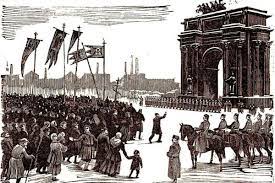CURRENT AFFAIRS
Get the most updated and recent current affair content on Padhaikaro.com
Revolutionary Activities
- IAS NEXT, Lucknow
- 24, Nov 2022

Revolutionary Activities
The revolutionaries considered, but did not find it practical at that stage to implement, the options of creating a violent mass revolution throughout the country or of trying to subvert the loyalties of the Army. Instead, they opted to follow in the footsteps of Russian nihilists or the Irish nationalists. This methodology involved individual heroic actions, such as organising assassinations of unpopular officials and of traitors and informers among the revolutionaries themselves.
The revolutionaries intended to inspire the people by appealing to their patriotism, especially the idealistic youth who would finally drive the British out.
The Extremist leaders failed to ideologically counter the revolutionaries as they did not highlight the difference between a revolution based on activity of the masses and one based on individual violent activity, thus allowing the individualistic violent activities to take root.
Revolutionary activities in different parts of India and abroad before and during the First World War.
Bengal
The first revolutionary groups were organised in 1902 in Midnapore (under Jnanendranath Basu) and in Calcutta (the Anushilan Samiti founded by Promotha Mitter, and including Jatindranath Banerjee, Barindra Kumar Ghosh and others.)
In April 1906, an inner circle within Anushilan (Barindra Kumar Ghosh, Bhupendranath Dutta) started the weekly.
In December 1907, there were attempts to derail the train on which the lieutenant-governor, Sri Andrew Fraser, was travelling.
In 1908, Prafulla Chaki and Khudiram Bose threw a bomb at a carriage supposed to be carrying a particularly sadistic white judge, Kingsford, in Muzaffarpur.}
Barrah dacoity was organised by Dacca Anushilan under Pulin Das to raise funds for revolutionary
Maharashtra
Ramosi Peasant Force by Vasudev Balwant Phadke in 1879.
Savarkar and his brother organised Mitra Mela, a secret society, in 1899 which merged with Abhinav Bharat.
Punjab
Ajit Singh (Bhagat Singh’s uncle) who organised the extremist Anjuman-iMohisban-i-Watan in Lahore with its journal, Bharat Mata.
Rashbehari Bose was involved as one of the leading figures of the Ghadr Revolution. Revolution.
Revolutionary Activities Abroad
Shyamji Krishnavarma had started in London in 1905 an Indian Home Rule Society.
Madanlal Dhingra from this circle assassinated the India office bureaucrat Curzon-Wyllie in 1909.
The Ghadar programme was to organise assassinations of officials, publish revolutionary and anti-imperialist Literature. The moving spirits behind the Ghadr Party were Lala Hardayal, Ramchandra, Bhagwan Singh, Kartar Singh Saraba, Barkatullah, and Bhai Parmanand.
Revolutionaries in Europe
The Berlin Committee for Indian Independence was established in 1915 by Virendranath Chattopadhyay, Bhupendranath Dutta.
The Indian revolutionaries in Europe sent missions to Baghdad, Persia, Turkey and Kabul to work among Indian troops and the Indian prisoners of war.
Mutiny in Singapore
Among the scattered mutinies during this period, the most notable was in Singapore on February 15, 1915 by Punjabi Muslim 5th Light Infantry and the 36th Sikh battalion under Jamadar Chisti Khan, Jamadar Abdul Gani and Subedar Daud Khan.